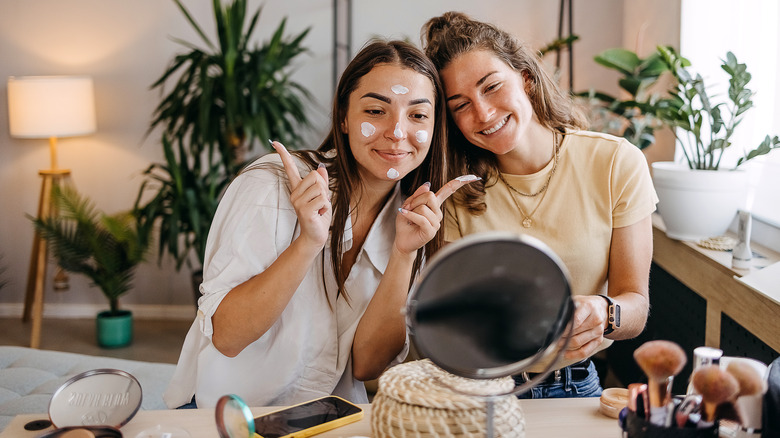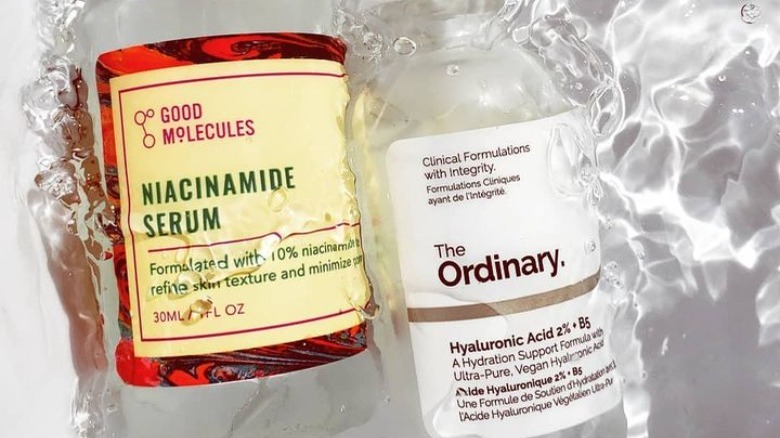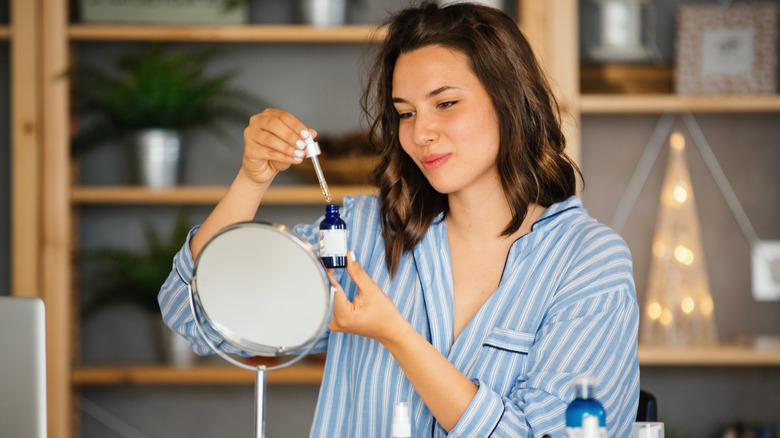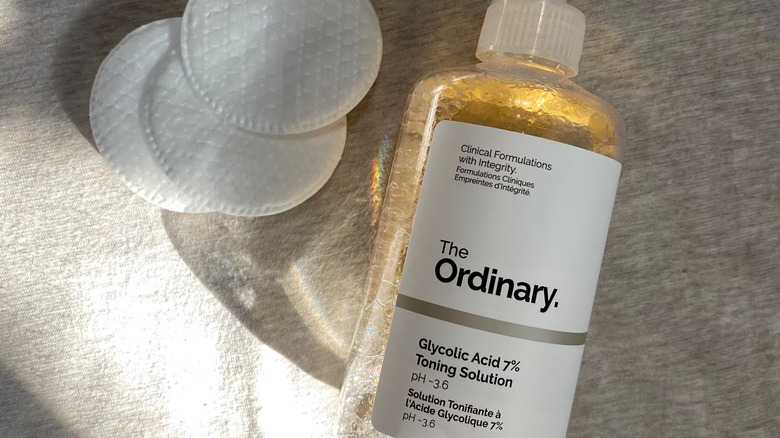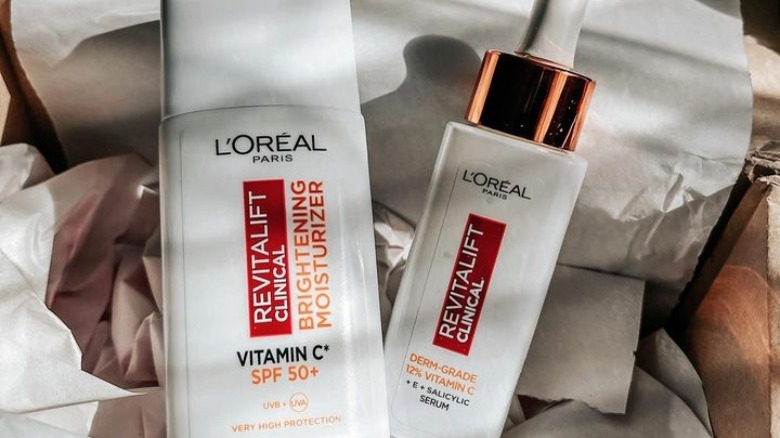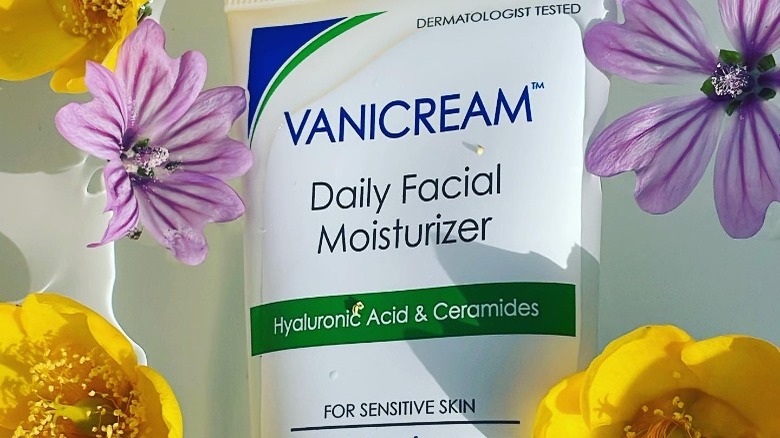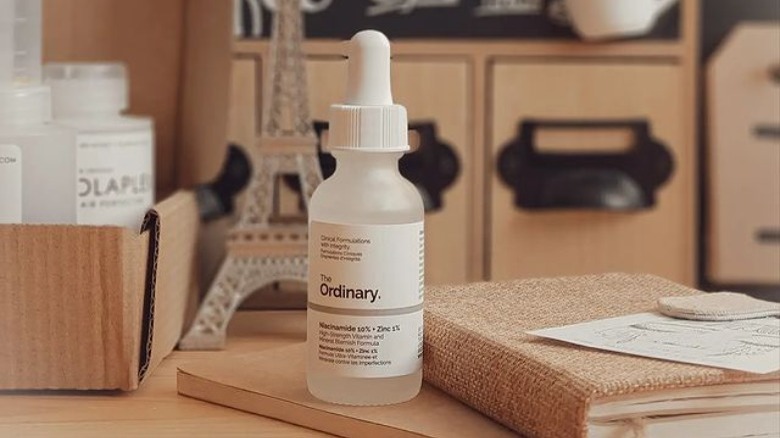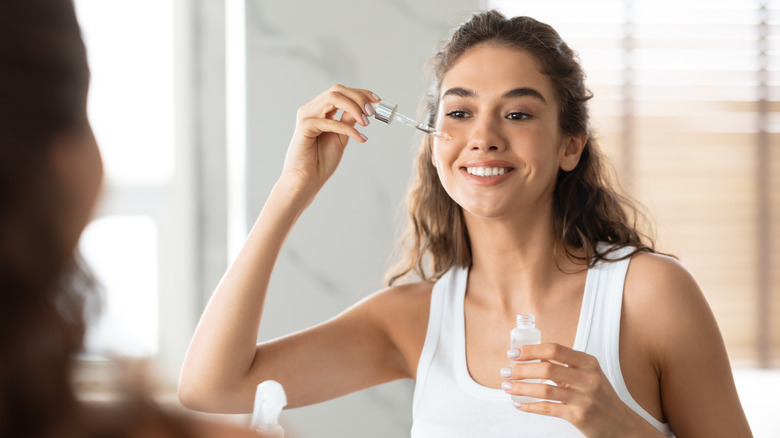Up The Efficacy Of Your Favorite Skincare Products By Slathering On These Perfect Pairings
Your skincare routine should include a collection of products that benefit your skin type and any issues you may have. You don't need to use a multitude of serums and creams, just a select few that will promote a clear, healthy complexion. A great way to scale back an unnecessarily long routine is by choosing the right products that work well together. Combining specific serums can even make them more effective. If you have dry skin, you may want to use niacinamide and hyaluronic acid, or you can apply retinol and peptides for a youthful complexion.
The order that you apply your products also affects their efficacy. Generally, you'll want to wash your face before you use any exfoliators, toners, serums, or oils. Then you finish your routine with a moisturizer. If it's your morning routine, you should also wear sunscreen. Another way to decide the order you'll put on products is by their consistency. The thinnest skincare should go on first so it can penetrate your skin, while the thicker ones sit on top to seal everything in. You should also apply any water-based serums before oil-based ones. By choosing the right product duo and using them in the proper order, your skincare routine will be perfectly tailored to benefit your complexion.
Niacinamide and Hyaluronic Acid
Even oily skin types need moisture. Adding more lotion on top of super greasy skin may seem unnecessary, but if you skip this step in your routine, your skin will produce even more oil. That's because it's trying to compensate for the moisture you're not giving it. Using niacinamide and hyaluronic acid is a great way to keep your complexion hydrated without adding any thick, pore-clogging ingredients. That way, you can have plump skin that doesn't look super greasy.
Niacinamide is a form of vitamin B, making it excellent at controlling your oil production. It also minimizes pores, hyperpigmentation, and fine lines. Meanwhile, hyaluronic acid is the perfect ingredient if you need to lock in moisture without using a thick product. This is because it can hold on to about 1,000 times its weight in water, according to Asian Beauty Essentials. As long as you apply it over damp skin, it will keep your complexion hydrated for hours. When you combine these two products, they keep the oil at bay while adding moisture. They're both water-based products, so that you can apply them at the same time in your routine.
Retinol and Peptides
Retinol and peptides are a perfect duo for clear, youthful skin. When you use them together, they're even more effective at giving you an even complexion. Retinol is a derivative of vitamin A, which treats many different issues. It works by promoting collagen production, which is the part of your tissue that holds everything together. Without it, wrinkles and saggy skin develop.
Peptides are strings of amino acids, which are what your body needs to create collagen. Using this serum will tighten your skin to prevent signs of aging. It works alongside retinol by strengthening the collagen promoted through retinol. Then your skin will look clearer, smoother, and more youthful. In the case of these two products, you'll want to apply the more potent one first. After cleansing your face, put on your retinol serum and then the peptides. If you've found using them simultaneously too strong for your skin, you can break it up by the time of day. You should apply the peptides during your morning routine and retinol at night.
Salicylic Acid and Glycolic Acid
There are many ways to exfoliate, from physical to chemical options. Each comes with their own characteristics, but try salicylic and glycolic acid if you're looking for something gentle. They are chemical exfoliants that pair well together to clear your pores and remove dead skin. Salicylic acid is a beta-hydroxy acid (BHA), making it excellent at clearing pores. It also breaks the connection between your dead skin cells. Once they're weakened, the glycolic acid works to remove them from the surface of your skin, so only your new healthy cells are left. It can do this because it's an alpha-hydroxy acid (AHA).
Using two chemical exfoliants simultaneously is safe if you're careful and pay attention to how your skin reacts. You can accidentally damage your skin barrier if you're not watching out for adverse reactions, like red, dry, flaking skin. To prevent this, you should slowly incorporate these products into your routine. Start using them just once a week and increase the frequency to three times a week if your skin can handle it. When applying them, use your glycolic acid first because it's water-based. Then you can put on the salicylic acid since it's oil-based. After they're dry, you should apply your serums and finish with a thick moisturizer to lower your chance of irritation.
Vitamin C and Sunscreen
Sunscreen is a necessary step in every skincare routine. You only need to apply it in the morning since the sun is out during the day, but it's essential to wear it no matter the weather. Even if it's a rainy day filled with clouds, you must protect your skin from the dangerous UV rays. Not wearing SPF every day can cause premature aging and make hyperpigmentation darker.
Adding vitamin C to your skincare routine will make your sunscreen even more effective, as well as improve your complexion in other ways. It brightens your skin and improves fine lines, wrinkles, and acne scarring. Vitamin C also protects your skin from free radical damage because it's a stable antioxidant. A study published in 2013 explains that SPF can only lessen your UV exposure by 55 percent. Using it alongside vitamin C increases that percentage since the antioxidant creates a UV protective barrier on your skin. Then it can reduce your chances of getting sunburnt by 40 to 60 percent. To use this duo, apply the vitamin C with your other serums and then finish your routine with SPF.
Hyaluronic Acid and Ceramides
Are you dealing with super dry skin? If so, hyaluronic acid and ceramides can help you restore the moisture you're missing. Hyaluronic acid attracts and holds onto water, so it is an amazing fix for dryness. However, you want to make sure you're using it right. You need to apply it to moist skin. Otherwise, it will pull the moisture from your skin instead of locking in additional water. Ceramides are the perfect pair to hyaluronic acid because it also helps to retain moisture for a plump complexion. That way, you can prevent flaking, dry skin. This product does even more for your skin by protecting your skin barrier and microbiome.
Combining hyaluronic acid and ceramides is perfect for people with a dry or combination skin type. This is because ceramides are an emollient that usually gets added to creams and thick moisturizers. Hyaluronic acid is a lightweight product, so any skin type can use it without worrying about looking overly greasy or shiny while trying to maintain a healthy, plump complexion. Put it on with your other serums, then finish your skincare routine and apply the ceramides last to lock everything in. Or you may find a product that already includes both of these ingredients, so you can put them on simultaneously.
Niacinamide and Salicylic Acid
Niacinamide and salicylic acid also pair well together. Using them both will give you a youthful and acne-free complexion. Since niacinamide controls oil production, your pores are less likely to become clogged and turn into pimples. It also is good at reducing the hyperpigmentation and redness that comes from new and old breakouts. You should use niacinamide along with salicylic acid because it will protect your skin barrier from irritation that the chemical exfoliant can cause. Salicylic acid is a BHA that clears your pores and breaks the connections in your skin cells so the dead ones are slogged off. It can also reduce any signs of aging because it increases collagen levels. This allows the skin to keep its elastic fibers intact, preventing fine lines, wrinkles, and sagging. Using these products in your skincare routine will help you keep your youthful glow.
Depending on your skin's sensitivity, you may want to apply each one at different times of the day. You should use niacinamide with your serums in the morning and then salicylic acid at night in place of other exfoliants. If your skin isn't easily irritated, use niacinamide and then apply the salicylic acid. This doesn't follow the usual steps of a skincare routine, but it's better to use the serum first because it will ensure that your complexion is hydrated enough to endure exfoliation.
Vitamin C and Vitamin E
Vitamin C and E are more than the supplements you take every morning. If you want to see them affect your complexion, you can benefit from applying them topically. Vitamin C helps your body in many different ways. It's necessary for growing bodies to develop and also helps produce collagen. Your skin needs its layer of collagen to make it elastic. That way, it doesn't sag and develop wrinkles.
Your skin also needs vitamin E to stay smooth and glowing. It'll work alongside vitamin C to reduce wrinkles and hyperpigmentation. You can also benefit from applying this antioxidant topically because as you spend time outdoors, the sun drains it from the outer layer of your skin. However, like vitamin C, it'll protect you from the free radicals that sunscreen can't. Even if you do end up getting a sunburn, applying a thin layer of vitamin E oil to the area will soothe and help heal the burn. You can apply these vitamins at the same time or use a product that includes both of them in its ingredients.
